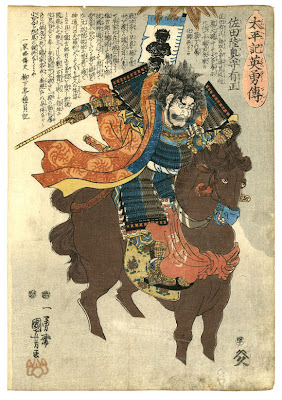Yakuza to the Rescue
by Jake Adelstein
The worst of times sometimes brings out the best in people, even in Japan’s “losers” a.k.a. the Japanese mafia, the yakuza. Hours after the first shock waves hit, two of the largest crime groups went into action, opening their offices to those stranded in Tokyo, and shipping food, water, and blankets to the devastated areas in two-ton trucks and whatever vehicles they could get moving. The day after the earthquake the Inagawa-kai (the third largest organized crime group in Japan which was founded in 1948) sent twenty-five four-ton trucks filled with paper diapers, instant ramen, batteries, flashlights, drinks, and the essentials of daily life to the Tohoku region. An executive in Sumiyoshi-kai, the second-largest crime group, even offered refuge to members of the foreign community—something unheard of in a still slightly xenophobic nation, especially amongst the right-wing yakuza. The Yamaguchi-gumi, Japan’s largest crime group, under the leadership of Tadashi Irie, has also opened its offices across the country to the public and been sending truckloads of supplies, but very quietly and without any fanfare.
The Inagawa-kai has been the most active because it has strong roots in the areas hit. It has several "blocks" or regional groups. Between midnight on March 12th and the early morning of March 13th, the Inagawa-kai Tokyo block carried 50 tons of supplies to Hitachinaka City Hall (Hitachinaka City, Ibaraki Prefecture) and dropped them off, careful not to mention their yakuza affiliation so that the donations weren't rejected. This was the beginning of their humanitarian efforts. Supplies included cup ramen, bean sprouts, paper diapers, tea and drinking water. The drive from Tokyo took them twelve hours. They went through back roads to get there. The Kanagawa Block of the Inagawa-kai, has sent 70 trucks to the Ibaraki and Fukushima areas to drop off supplies in areas with high radiations levels. They didn't keep track of how many tons of supplies they moved. The Inagawa-kai as a whole has moved over 100 tons of supplies to the Tohoku region. They have been going into radiated areas without any protection or potassium iodide.
The Yamaguchi-gumi member I spoke with said simply, "Please don't say any more than we are doing our best to help. Right now, no one wants to be associated with us and we'd hate to have our donations rejected out of hand."
To those not familiar with the yakuza, it may come as a shock to hear of their philanthropy, but this is not the first time that they have displayed a humanitarian impulse. In 1995, after the Kobe earthquake, the Yamaguchi-gumi was one of the most responsive forces on the ground, quickly getting supplies to the affected areas and distributing them to the local people. Admittedly, much of those supplies were paid with by money from years of shaking down the people in the area, and they were certainly not unaware of the public relations factor—but no one can deny that they were helpful when people needed aid—as they are this time as well.
It may seem puzzling that the yakuza, which are organized crime groups, deriving their principal revenue streams from illegal activities, such as collecting protection money, blackmail, extortion, and fraud would have any civic nature at all. However, in Japan since the post-war period they have always played a role in keeping the peace. According to Robert Whiting’s Tokyo Underworld and Tim Weiner’s Legacy of Ashes, the US government even bought the services of one infamous yakuza fixer, Yoshio Kodama, to keep Japan from going communist and maintain order. Kodama would later put up the funding to create the Liberal Democrat Party of Japan that ruled the country for over fifty years. When President Obama visited Japan last year, the police contacted the heads of all Tokyo yakuza groups and asked them to behave themselves and make sure there were no problems.
As one members said, “There are no yakuza or katagi (ordinary citizens) or gaijin (foreigners) in Japan right now. We are all Japanese. We all need to help each other.”















